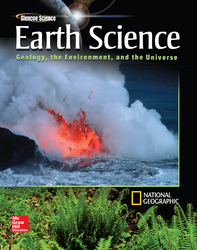1 A) Baltica B) Rodinia C) Pangaea D) Laurentia 2 A) been rigid since the formation of Earth B) have the same specific gravity C) different densities D) the same densities 3 A) the same temperature as B) always 10 degrees less than C) cooler temperatures than D) hotter temperatures than 4 A) because of the principle of included fragments B) It is much less stable than the sandstone. C) because of the principle of superposition D) It is much more stable than the sandstone 5 A) feldspar B) iron and quartz C) feldspar, quartz, and mica D) iron- and magnesium-rich minerals 6 A) by mountain chains that formed as tectonic plates collided B) by seams that developed as rock layers faulted C) by cooling molten rock that glued the land together D) by the erosion of mountains 7 A) sea-floor spreading B) evolution C) outgassing D) plate tectonics 8 A) the Ediacaran fauna B) the Burgess Shale fauna C) trilobites D) corals 9 A) global warming B) formation of ozone C) outgassing D) the Varagnian glaciation 10 A) hydrothermal vents B) magma chambers C) trenches D) transform faults 11 A) methane B) ammonia C) nitrogen D) oxygen 12 A) Heavier materials sank toward the core, and lighter materials rose. B) Widely separated land areas started looking different from one another. C) The Atlantic and Pacific Oceans developed from the original global ocean. D) Outgassing formed an oxygen atmosphere. 13 A) decaying vegetation B) photosynthesis C) volcanoes D) automobile engines 14 A) acid rain B) ultraviolet radiation C) tiny meteorites D) tornadoes and hailstorms 15 A) Earth's oceans probably formed long before Earth's atmosphere and covered most of Earth's surface. B) Earth's earliest atmosphere was primarily composed of oxygen and contained very little water vapor, carbon dioxide, or nitrogen. C) Earth's earliest oceans were much deeper than today, and the continents rose much higher in elevation. D) Earth's earliest atmosphere probably contained large quantities of water vapor, carbon dioxide, and nitrogen, but contained very little oxygen gas. 16 A) outgassing B) photosynthesis C) gravity D) wind





